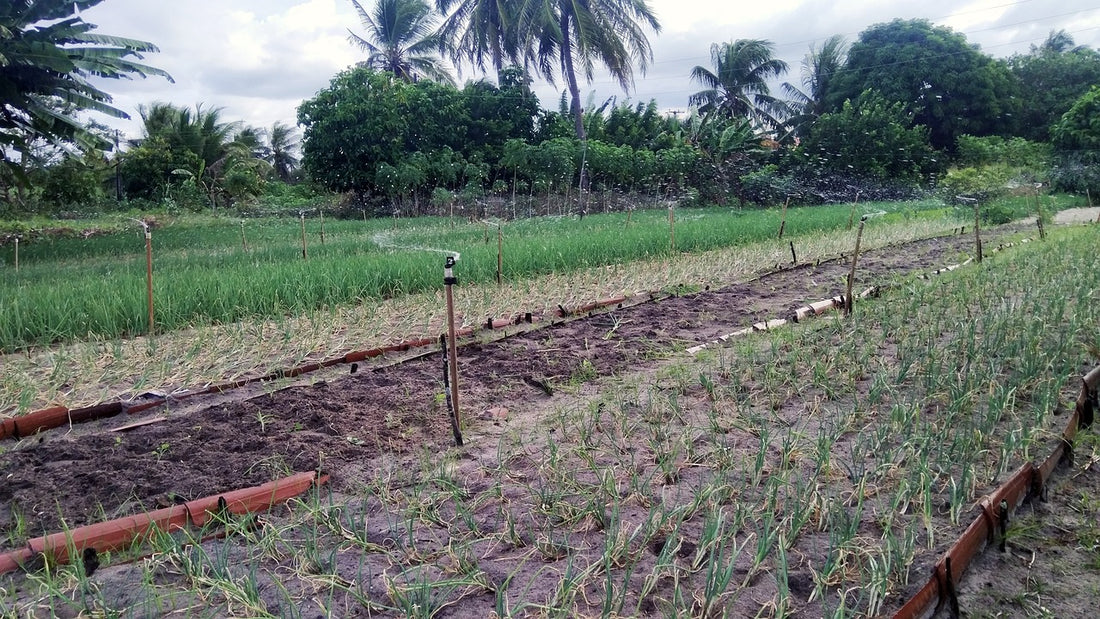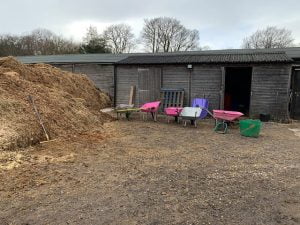Why and how to use horse manure in permaculture vegetable gardens?

In a previous article dedicated to this amendment for the garden , we briefly presented the different types of manure. Let’s look more specifically at horse manure here.
Before seeing where to get it and how to use horse manure optimally in a natural vegetable garden , let's start by examining its particular characteristics.
Main characteristics of horse manure
A balanced material
The horse is a relatively fragile animal.
And we also tend to give it a special status. It is an animal that we describe as “noble” for which we feel a particular sympathy (too bad for other animals…).
For these reasons, the litter (generally made of straw) is changed very frequently.
This means that this manure will be particularly rich in woody, carbonaceous materials (often more than 50% of the total manure).
However, this type of material is ideal for creating stable humus, the gardener’s “Grail”.
Furthermore, horse manure contains nitrogen, potash and other mineral elements ( calcium , magnesium , etc. A little less phosphorus as we will see below), this in balanced proportions, but relatively low (reason for which we classify as an amendment, not as a fertilizer).
Thus, but also because of its diverse composition * (urine, droppings, straw), it constitutes a balanced amendment, ideal for improving land in a sustainable manner.
* – As confusion is common, a little clarification is necessary here: droppings alone are not manure... They are just droppings, never to be used alone (composting with other materials is then imperative.).
A warm material
Horse manure heats up easily and quickly.
It is therefore particularly interesting for warming heavy, clayey soils.
A lightweight material
It is also a lightweight material.
I know… When you transport your wheelbarrows of manure, you will not agree with me…
By this I mean that it is light compared to other manures (notably cow manure) and especially compared to heavy, clayey soil.
It will therefore lighten this type of soil.
Where to get horse manure?

You can get horse manure from breeders in your region (there are more and more horse breeders everywhere...).
Unless they value it themselves, they will generally be happy to get rid of this “bulky item”.
However, depending on its origin, horse manure can unfortunately contain toxic elements, such as chemical dewormers or other drug residues.
It therefore seems important to me to obtain this information from the breeders from whom you wish to obtain manure.
Fortunately, more and more breeders are favoring a gentle approach.
Also note that composting eliminates these undesirable elements in a garden. In the absence of manure from “natural” livestock, the use of “contaminated” manure therefore remains possible, provided it is composted…
Although this is not as “living” a product (and therefore favorable to soil life) as “raw” manure, be aware that you will also find, in most garden centers, composted manure (in granules or powder). ).
How to use horse manure in a permaculture garden?
Compost

We have seen that horse manure is rich in nitrogen and potash.
On the other hand, it is relatively low in phosphorus.
Mixing it with green materials (richer in phosphorus) will therefore be a good thing.
This can be done by incorporating it into your plant compost.
Or, if you choose to compost the manure in piles, adding and mixing clippings, BRF or other sized green waste.
The compost obtained will be spread just before planting crops or even at their base (vegetable gardens, flowers, fruit trees, etc.).
Spread horse manure directly on land
Heavy soils (but it will also be beneficial for light soils, even if cow manure would then be more appropriate) will benefit from a good spreading of fresh horse manure (Which means recent… And in reality rather warm).
During the winter, earthworms and other “decomposer” micro-organisms will gradually integrate it into the soil, while decomposing it.
The manure will then not only be beneficial to the life of the soil (you bring food to its inhabitants, at a time when it may be lacking...), but also to its structure (these soil workers aerate it.) and to its fertility (supply of mineral elements, constitution of stable humus).
When to spread horse manure?
Manure can contain pathogenic germs…
Also, I strongly advise against spreading manure that is not perfectly decomposed in the spring , just before planting crops (even less at the base of existing crops).
On the other hand, if it is perfectly decomposed, this remains possible... But then we are no longer talking about “manure”, but rather compost.
However, the best time to spread this amendment is fall .
Quantity of horse manure per m²
Containing urine, horse manure has a relatively high ammonia content.
It should therefore not be abused.
An annual spreading of 1 to 3 kg of manure per m² constitutes a reasonable contribution, without risk of ammonia pollution.
Horse manure has a variable density (in particular depending on the proportion of straw and its degree of decomposition) of between 100 and 300 kg per m3 ...
Well... Without having to measure the density of the manure you have collected, and to simplify things, let's say that you can spread more or less the contents of a wheelbarrow over 10 m² of land.
Spreading methods
Alternating contributions is a good thing.
Also, I do not necessarily recommend that you add manure every year.
In heavy soil, you can alternate, each autumn, the addition of horse manure and the cultivation of green manure.
Or, for example, adopt a 3-year cycle:
- A crop of green manure in the first year, mainly to soften the soil;
- An addition of manure, in the second year, to enrich it sustainably (while making it lighter);
- In the third year: an addition of compost, covered with good mulch to maintain fertility…
Before spreading, leave the residue from cleaning the plot in place.
You can also bring some green materials (mowing, pruning, household vegetable waste, etc.).

Spread the manure as regularly as possible, at a rate of one wheelbarrow per 10 m² at most per year (so 2 wheelbarrows for additions every 2 years, or 3 wheelbarrows if you add manure every 3 years).
To encourage the decomposition process, do not hesitate to cover the manure with a layer of hay, crushed material, dead leaves or even straw.
Note that it is also possible to very lightly integrate the manure onto the surface of the soil (by shallow scratching). This at least one month after spreading (so that the decomposition process can start). But in my opinion it's work for nothing (the earthworms will take care of it). And it is above all risky (the manure can rot in the ground rather than decomposing).
For your warm layers
Horse manure, due to its ability to heat quickly, is the ideal material for creating warm layers.




































